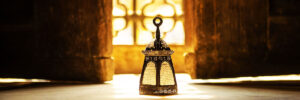Perhaps with the exception of bacteria, one of the greatest riches of living organisms is the potential for biological variability that produces diversity within and outside of the species, which even benefits those microscopical particles encapsulated in protein vesicles made entirely of fragments of genetic code (DNA or RNA) that we call viruses, one of which, by the way, currently keeps humanity in check, not just in the biomedical field, but also in social and mental aspects. This potential for biological variability is the engine of evolutive change in all living beings (and as we can observe, also in some non-living ones), which coupled with the social and cultural diversity of our species, allows, that human populations for example, and the different individuals in those populations, don’t suffer equally the onslaught of viral agents, such as SARS-CoV-2.
As part of an archipelago almost a thousand kilometers off the coast of Ecuador, Baltra Island is one of the 19 islands that form part of the famous Galapagos Islands, a living museum of the natural world, a real showcase of biological evolution that owes its fame mainly to the arrival of the famous naturalist Charles Darwin, aboard the HMS Beagle in 1835.
During his almost five-year long journey through South America, Darwin created a detailed record of the specimens he found in his sea travels, which, as soon as he arrived at the port of Falmouth, in the southern coast of England, he sent to some specialists of the time to help him classify them, among them the famous ornithologist John Gould, who finally verified that, particularly when analyzing a type of birds called finches, that what for Darwin had at first been specimens with slight morphologic differences were really new species that had evolved from occupying different niches in each of the Galapagos islands, due to the geographical isolation and the different independent ecosystems that each island possessed.
These observations on the variations between the organisms that inhabit different islands, allowed Darwin to develop the theory of evolution by natural selection, that more than two decades after his journey through South America, was recorded in “The origin of species”.
The social and cultural diversity of our species, allows, that human populations for example, and the different individuals in those populations, don’t suffer equally the onslaught of viral agents, such as SARS-CoV-2.
This famous evolutionary scenario, of biological variability and diversity, is the framework for the development of the innovative proposal of one of the cocktail bars in Colonia Condesa, as if this were not enough, one of the sites with the largest amounts of art deco architecture in the world and one of the most important multicultural enclaves of social and cultural life of Mexico City. Baltra Bar is a small, relaxed space with dim light and nineteenth-century details, animal skulls and insect collections, wich transports us to the Victorian world, birthplace of the famous expedition of Captain Robert FitzRoy aboard the HSM Beagle, from which the legend of Darwin is derived.
Of course Baltra Bar and the famous neighborhood that contains it, are part of the currently debatable process of gentrification, which not only takes place in urban centers, but also affects some peripheries of large cities, especially those that have certain spaces with heritage value in architectural terms. It is then a process in which an urban space, with some historical/architectural value, which for various reasons has been deteriorated, is rehabilitated, which causes an increase in rental costs and in general living costs for its inhabitants, as a result of the high level of commercialization to which it is subjected.
One of the problems derived from the gentrification process is the displacement of its original inhabitants, who eventually cannot afford the high costs of living in a somehow “internationalized” real estate area, a context that digital platforms such as AirBnB have been able to take advantage of in an exceptional way. Of course, one of the resulting effects of these processes is the enormous “floating” or non-population (this reminded me a little of the “non-places” of Augé) that “inhabit” these spaces.
I don’t know if I particularly agree with criticizing gentrification per se, because certainly on the one hand, it is the rescue of sites that would otherwise probably be part of some red light in the cities. Perhaps the solution lies more in regulating mercantilist excesses than in putting a pernicious connotation on something that not only generates the economic development of some spaces in big cities, but also allows for multicultural interaction. Spaces like Baltra allow us to understand more about the importance of variability and biological diversity of species, but above all, they help us to understand, respect and value how transcendent multicultural interaction, human cultural diversity, has been, is and will be for our species.
Baltra Bar is a small, relaxed space with dim light and nineteenth-century details, animal skulls and insect collections, wich transports us to the Victorian world.
Trained as a biological anthropologist, he is a doctoral student at the National School of Anthropology and History (ENAH), where he studies the processes that develop creativity and innovation in humans, within the framework of institutional education, under the guidance of the professor Agustín Fuentes. He collaborates with the curatorship of the Introduction to Anthropology and Populations of America rooms of the National Museum of Anthropology, and he is also common people.


